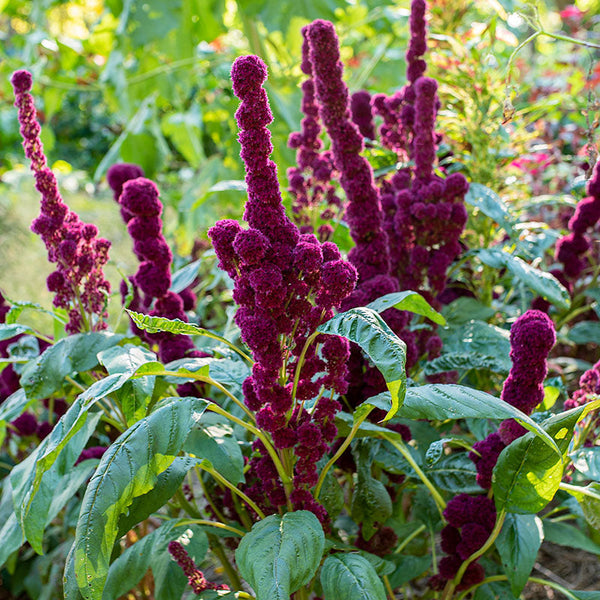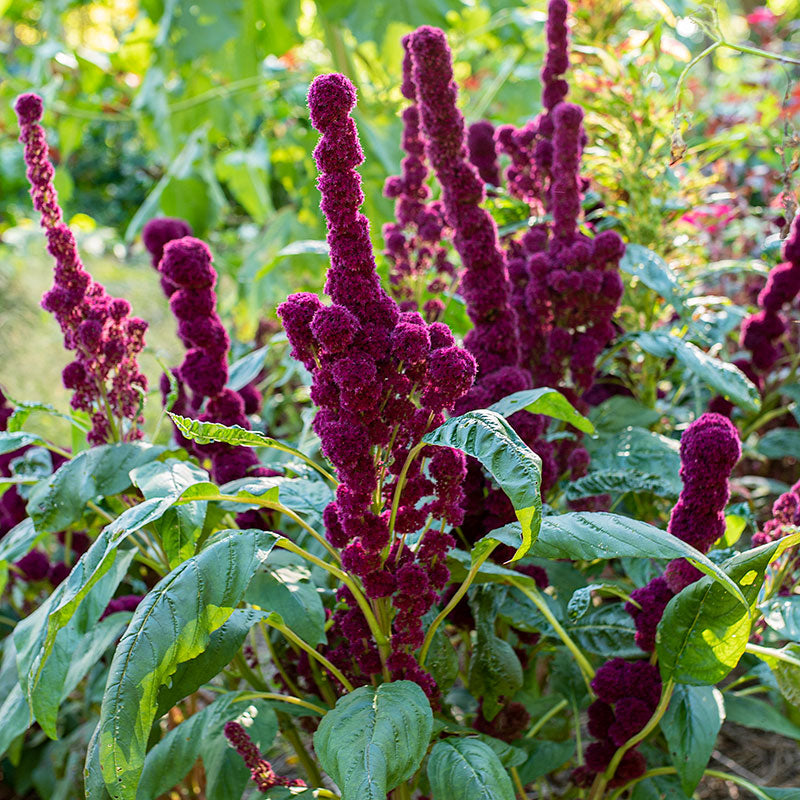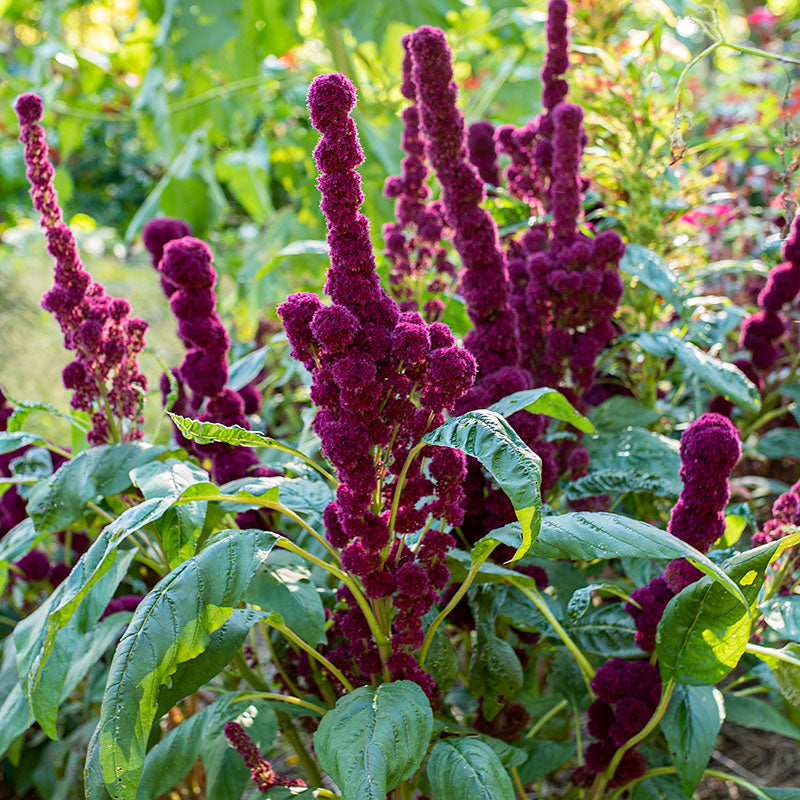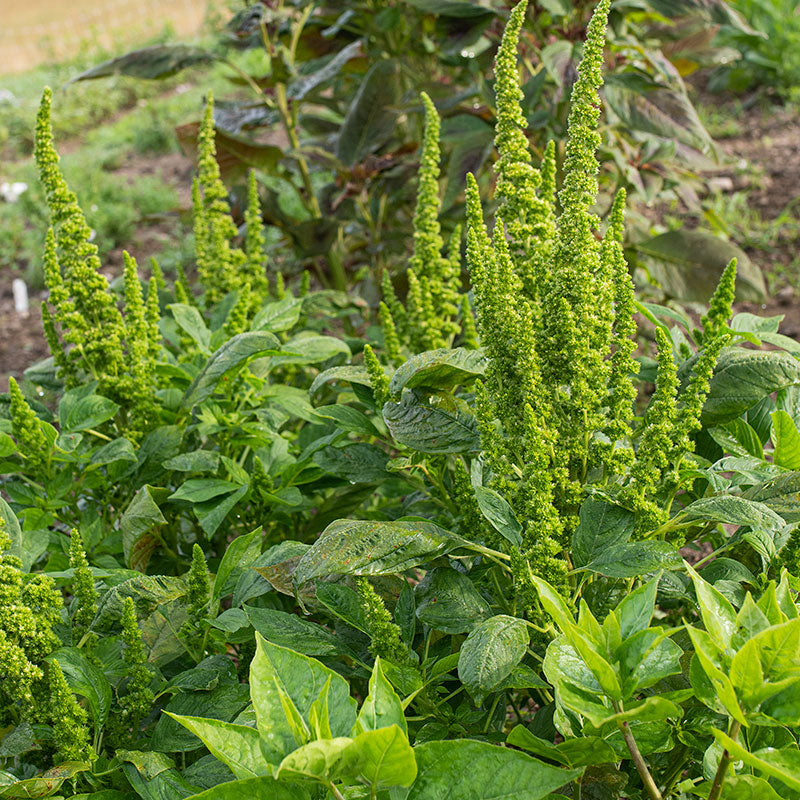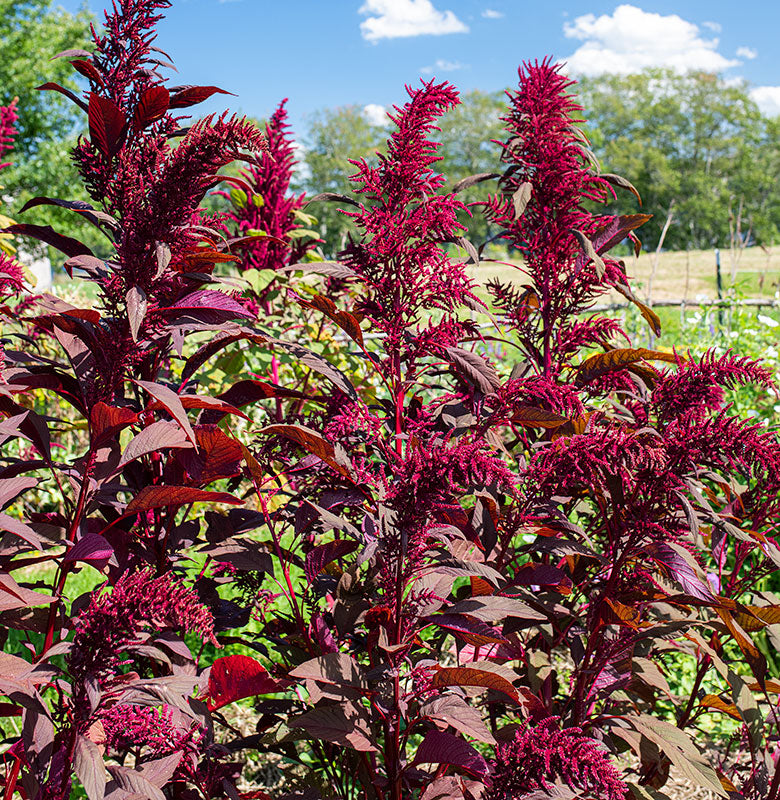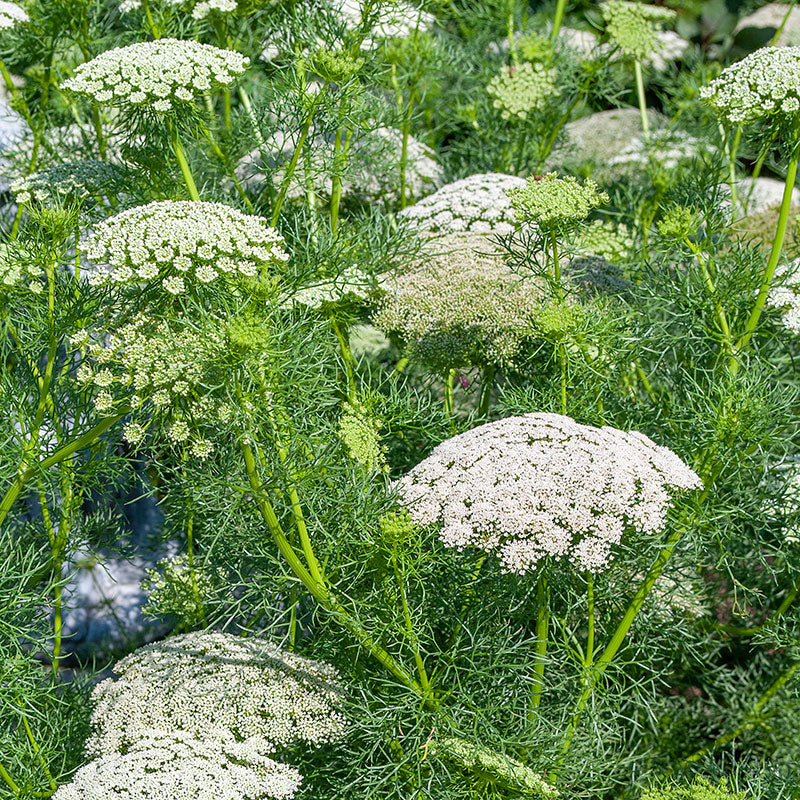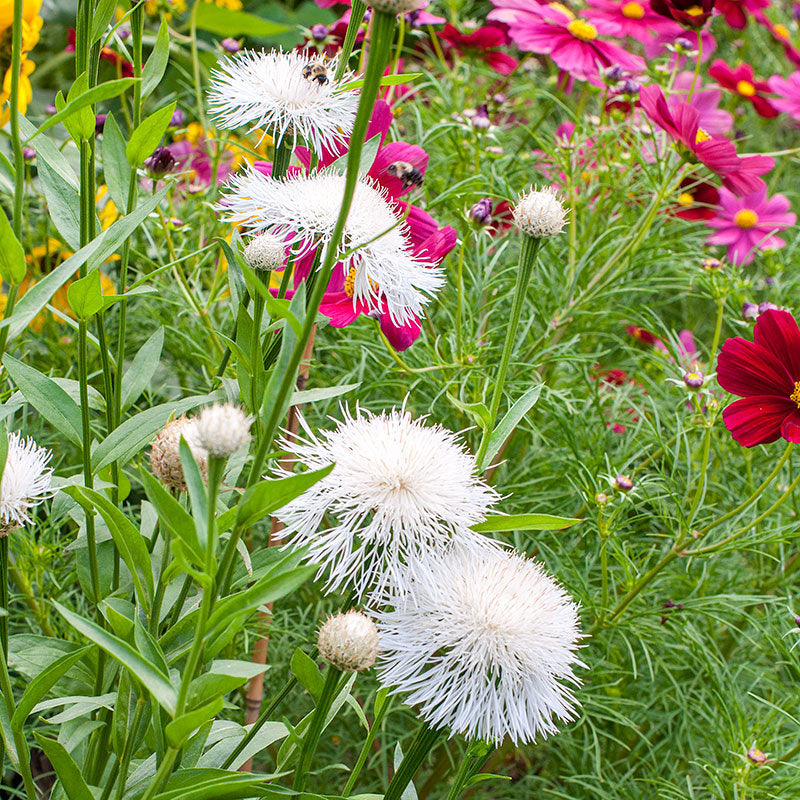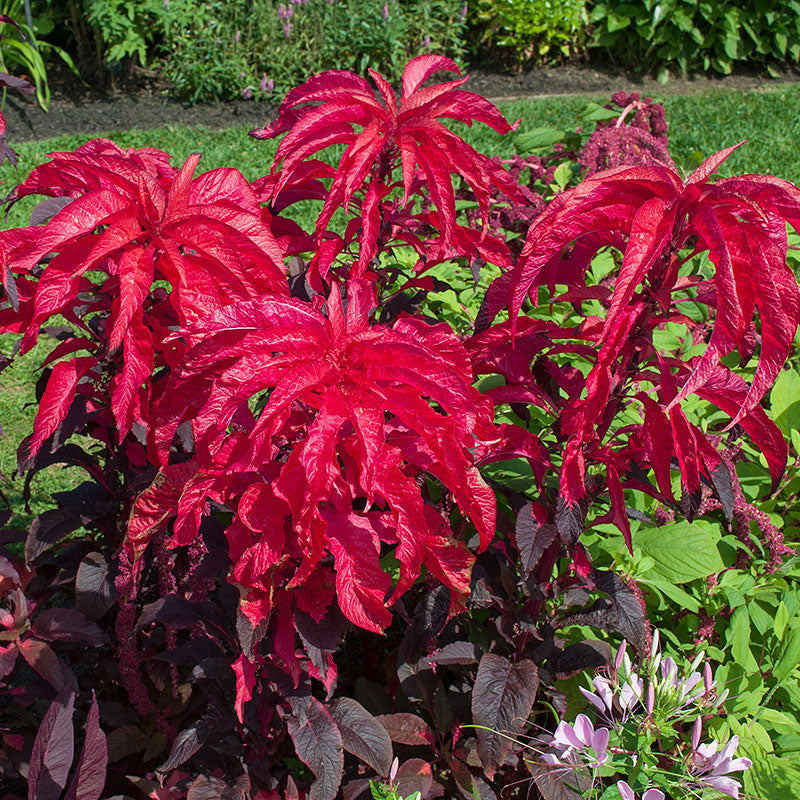SOWING INSTRUCTIONS
Depth:
Barely cover 1/16"
Starting Indoors:
Six weeks before last frost, sow thinly into pots filled with a mix specifically for seed germination. Keep at 65-75°F with evenly moist conditions by placing a humidity dome over the containers until germination occurs, or by sprinkling a thin cover of vermiculite over the pots.
Starting Outdoors:
Direct sow after last frost.
WHEN TO SET OUTSIDE
After all danger of frost has passed. Be careful not to disturb the roots.
PLACEMENT & CULTIVATION
Many amaranth varieties were initially grown for their edible young leaves and the tremendous quantity of nutritious seeds high in protein, vitamins, and anti-inflammatory compounds. It thrives in summer's heat and in vegetable gardens and flower borders. Easy to grow in well-drained soils, avoid overly wet soil to avoid root diseases. Self-sows.
Watering Details:
Drought tolerant. 1" a week until fully established; then water during dry spells.
Soil pH:
Slightly acidic to neutral
Fertilizer:
If soils are particularly poor, mix in an organic granular fertilizer once seedlings have reached 6-8" in height. Avoid excess fertilizer.
Diseases & Pests:
Flea beetles can damage leaves and tarnished plant bugs can infest flower heads. Use an organic insecticide to control. Provide freely-draining soils, for, in wet soils, emerging seedlings may die from soil pathogens. Overly moist soils also encourage various fungal root and stem rots on mature plants, causing collapse.
When to Cut for Bouquets:
Harvest for fresh cuts when 1/2 to 3/4 of the florets are open.






























